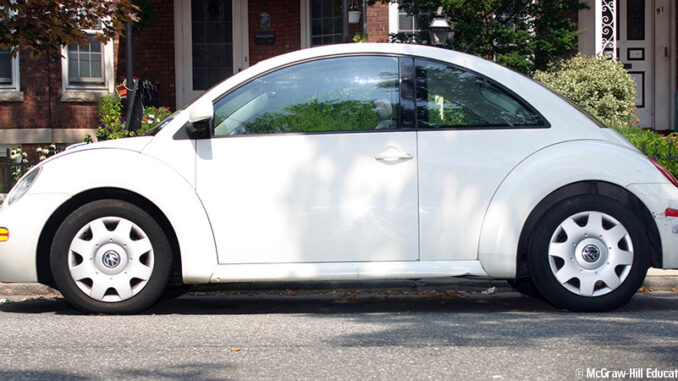
Changes for Baltimore Police Department
In 2015, Freddie Gray, a 25-year-old African American man, was arrested by police in Baltimore, Maryland. During his arrest, he sustained a severe spinal cord injury and died while in custody. Six officers were charged in Gray’s death, yet none were convicted, setting off a widespread wave of protests and further damaging the relationship between police and the African American community. Now, the Justice Department has mandated changes to Baltimore’s police department, which has regularly been found to discriminate against African Americans. (63 percent of Baltimore’s residents are African American.)
Under the terms of the agreement, police officers will undergo eighty hours of additional training in areas such as proper procedures for stops, searches, and arrests. The agreement also calls for the installation of video cameras inside police vans, and prohibits police from unlawful stops and arrests (such as stopping people based solely on what they look like or where they are). Justice Department negotiators have been rushing to complete the agreement before Donald Trump takes office on January 20. Candidate Trump often of a “war on police” while running for president. However, it will be up to the Trump administration to appoint an independent outside monitor to decide whether or not the Baltimore police department is abiding by the terms of the agreement.
A similar agreement is also in the works in Chicago, another city which struggles with police and race relations.
What Do You Think? While some people are hopeful that the agreements in Baltimore and Chicago will improve relations between police and the communities they serve, others are concerned that an agreement alone will not lead to change if it is not backed by action. Do you think these negotiations are the first step to real change? Why or why not?
Volkswagen Faces Charges in Emissions Scandal
Back in 2015, btw brought you the story of German automaker Volkswagen, which was accused by the U.S. government of cheating at its emissions tests. This week, six Volkswagen executives face criminal charges for their role in the scandal.
Worldwide, about 11 million Volkswagen cars received altered emissions monitoring devices that allowed the cars to perform within the EPA’s Clean Air Act guidelines while stationary. However, once the cars were moving on the road, they emitted pollutants at 40 times over the U.S. limit. As a result, more than a half a million Volkswagen cars were recalled in the United States alone.
Now, the company has pleaded guilty to criminal charges of conspiracy to commit wire fraud, customs violations, obstruction of justice, and violation of the Clean Air Act. Volkswagen will be required to pay $4.3 billion in criminal and civil penalties. This is an addition to settlements of lawsuits brought by car owners themselves, bringing the total in the United States alone to $20 billion: one of the most expensive corporate scandals in U.S. history. And Volkswagen still faces criminal investigation by 42 states, which means that the total they owe will continue to climb. Germany will also be conducting an investigation of its own.
Out of the six Volkswagen executives who have been indicted, five are in Germany and one–Oliver Schmidt, former top emissions compliance executive in the U.S.–has been arrested here in the United States. Schmidt has been charged with eleven felonies and could face up to a life sentence for his role in the scandal.
Dig Deeper Using Internet resources, research how many German workers are employed by Volkswagen. How do you think the outcome of the lawsuit will affect these workers? What do you think are the possible implications of this case on a global scale?
West Coast Pummeled by Heavy Rain
Parts of California and Nevada have been suffering from drought for years. Now, they face the opposite weather problem: too much rain.

Over the past week, a weather system called the “Pineapple Express” has brought moisture from Hawaii to the West Coast. Heavy rains and flooding have caused widespread evacuations in both states. Over half a million residents have also lost power due to the storms, which brought ten to fifteen inches of snow and rain to the Sierra Nevada mountains in California. Rivers and streams leading from these mountains into lower areas of California and western Nevada flooded heavily as a result. Furthermore, the ground–cracked and dry from months and even years of drought–cannot easily absorb the sudden onslaught of precipitation. It is predicted that this could be the worst flooding the area has seen in a decade. The storm has also brought mudslides and wind gusts of over 170 miles per hour.
However, for an area so plagued by dry conditions, the long-term effect of the storms could be positive. California officials have not yet declared an end to the drought because no rain has fallen in the southern part of the state. Even so, the effect of the storms on California’s water supply has been staggering. Since January 1, San Francisco has received 5.53 inches of rain (the highest amount since 1982). Other cities received even more: Guerneville has received 21 inches of rain since January 4, and Downieville reports receiving 23 inches in one week’s time. Lake Oroville, the principal reservoir, currently has nearly 2.25 million acre feet of water, compared to about 1 million acre feet a year ago. In all, the total storage for California’s largest reservoirs is currently at 111% of its normal levels.
Dig Deeper Using Internet resources, work with a partner to create a line graph showing the total amount of rainfall in California over each of the past ten years. Even though it’s just getting started, how does 2017 compare to other years? Based on your graph, can you make any predictions about next year’s rainfall in the area?
Presidential Wax Museum Closes Its Doors
Would you like to own a piece of presidential history? With a few thousand dollars and bus fare to Pennsylvania, you can!
The Hall of Presidents and First Ladies, a wax museum near Gettysburg, Pennsylvania, closed its doors in November after sixty years in business. Max Felty, the museum’s owner since 2008, had hoped that the excitement of the recent presidential election would help revive poor attendance numbers, but when that didn’t happen, the decision was made to close down. Now, Felty is auctioning off the entire collection of wax figures, including every U.S. president and first lady, to the highest bidders. Felty predicts that Abraham Lincoln will fetch the highest price.
In its heyday during the 1960s and 1970s, the museum received about 100,000 visitors per year, but that number steadily dropped off to about 11,000 visitors in 2016. The displays feature the presidents in varying degrees of historical accuracy. Visitors to the museum press a button to see each president lit up and hear a few words about him, including an excerpt from one of his own speeches. For some reason, the first ladies–portrayed in their inaugural gowns–are only about one-third the size of their husbands, and do not speak.
Visitors to the auction preview have included the owners of other wax museums looking to supplement their own displays, collectors, and even the owner of a haunted house–ensuring that even though the museum itself is closing its doors, its presidential legacy will live on.
